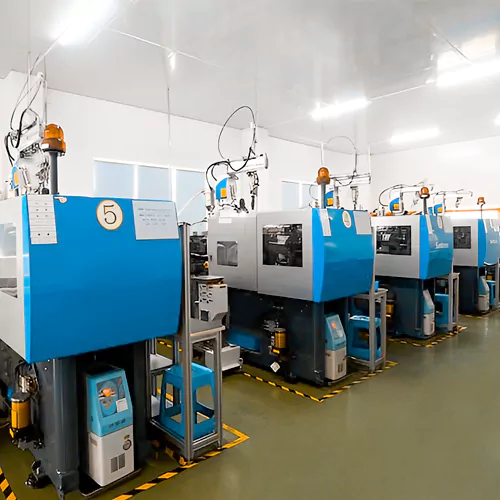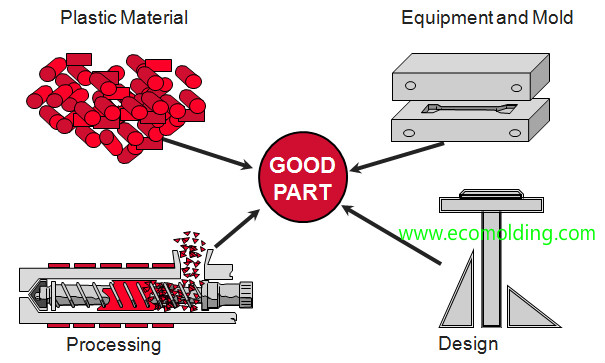Just How Plastic Injection Molding Drives Efficiency in Automation
Just How Plastic Injection Molding Drives Efficiency in Automation
Blog Article
Understanding the Essentials of Plastic Injection Molding Procedures
Plastic shot molding offers as a cornerstone of modern-day production, offering a systematic technique to creating complex elements with precision. Checking out these crucial aspects could expose how even minor adjustments can lead to significant improvements in production end results, increasing inquiries concerning the possibility for development in this well established process.
What Is Plastic Shot Molding?
Plastic injection molding is a commonly used manufacturing procedure that changes polycarbonate and thermosetting materials right into specific and complex shapes. This strategy is preferred for its ability to create high quantities of the same get rid of exceptional precision, making it an important technique in numerous industries, consisting of automobile, durable goods, and clinical devices.
The procedure involves thawing the selected plastic product and injecting it into a mold under high pressure. The mold, designed to the specifications of the preferred component, permits the molten plastic to form as it cools down and solidifies. When the material has set, the mold and mildew is opened, and the finished component is ejected.
Plastic injection molding provides several benefits, including lowered waste, consistency in production, and the capacity to integrate detailed layouts that may be challenging with other manufacturing methods. In addition, it sustains a wide variety of materials, each offering special residential properties that can be customized for details applications. As markets remain to introduce, plastic shot molding continues to be at the leading edge, allowing the growth of sophisticated items that fulfill developing customer demands.
The Shot Molding Process
The shot molding process is a sophisticated method that includes several key stages to create top quality plastic elements. Originally, plastic pellets are fed into a heated barrel where they are merged a thick liquid. This molten plastic is then injected under high pressure right into a precision-engineered mold, which shapes the material right into the desired form.
When the mold is filled up, the plastic is permitted to cool down and strengthen, taking the form of the mold cavity. Cooling time is essential, as it influences the cycle time and the final properties of the shaped part. After adequate air conditioning, the mold opens, and the ended up part is expelled making use of ejector pins.

Materials Utilized in Injection Molding
Different products can be utilized in the shot molding procedure, each offering distinct homes that deal with details applications. One of the most generally utilized products include thermoplastics, thermosetting plastics, and elastomers.

Thermosetting plastics, like epoxy and phenolic materials, go through a chemical modification throughout the treating process, causing a rigid, stringent structure. These materials are ideal for applications needing high warmth resistance and architectural stability, often made use of in electrical insulators and automotive components.
Elastomers, consisting of silicone and rubber-based materials, give adaptability and strength. Their distinct homes make them ideal for applications that demand flexibility, such as seals and gaskets.
In addition, specialized products like bio-based plastics and composites are gaining traction for their environmental benefits and improved efficiency qualities, expanding the range of injection molding applications in different sectors. Recognizing the homes of these materials is crucial for choosing the suitable kind for particular tasks.
Benefits of Injection Molding
Shot molding stands apart as an extremely effective production process that uses many advantages for creating intricate get rid of precision. One of one of the most considerable benefits is the ability to develop elaborate informative post designs that would be challenging or impossible to attain with various other techniques (Plastic Injection Molding). The procedure permits in-depth features and limited resistances, making certain high-quality components
In addition, injection molding is recognized for its fast production capacities, making it a suitable choice for high-volume production. As soon as the mold and mildew is produced, components can be created promptly, minimizing preparations and enhancing general productivity. This efficiency not only decreases manufacturing costs however likewise supplies a competitive edge in the market.
The convenience of materials utilized in injection molding even more improves its appeal. A vast array of thermoplastics and thermosetting polymers can be employed, enabling makers to select products that best meet their details requirements, including adaptability, warmth, and toughness resistance.
In addition, the process reduces waste, as excess product can often be recycled and reused. This sustainability aspect adds to a reduced environmental influence, making injection molding an accountable manufacturing option. On the whole, the advantages of injection molding make it a favored technique for lots of markets.
Variables Influencing Item High Quality
While numerous factors can affect item click this quality in injection molding, comprehending these aspects is critical for attaining optimal outcomes. Key aspects include material selection, refining criteria, and mold and mildew layout.
Material he said selection plays an important role, as different polymers show special buildings that affect flowability, toughness, and thermal security. Inadequate material option can result in flaws such as bending or insufficient dental filling.
Handling parameters, including cycle, temperature level, and stress time, must be diligently managed. Variants in these setups can lead to variances partially measurements and surface area coating. Excessively high temperatures may cause destruction of the polymer, while poor pressure can result in brief shots.
Mold and mildew layout is equally vital, as it figures out the circulation of the molten plastic and the cooling process. Poorly designed molds might cause unequal cooling prices, causing dimensional inaccuracies and recurring stresses.

Verdict
To conclude, plastic injection molding serves as a critical production procedure that enables the effective manufacturing of high-quality components. Proficiency of the shot molding process, including the understanding of products and the influence of numerous variables on product quality, is vital for accomplishing optimum results. The benefits of this technique, such as cost-effectiveness and style adaptability, further underscore its relevance throughout multiple markets, strengthening its standing as a recommended choice for high-volume manufacturing.
Plastic shot molding serves as a cornerstone of modern manufacturing, giving a systematic approach to generating complicated components with accuracy.Plastic injection molding supplies a number of advantages, including minimized waste, consistency in manufacturing, and the ability to integrate detailed styles that may be challenging with other making approaches (Plastic Injection Molding). As sectors continue to innovate, plastic shot molding remains at the leading edge, allowing the advancement of sophisticated items that satisfy developing consumer demands
The injection molding procedure is an innovative technique that includes several vital phases to generate high-quality plastic parts.In conclusion, plastic shot molding serves as a critical production process that enables the effective production of top notch components.
Report this page